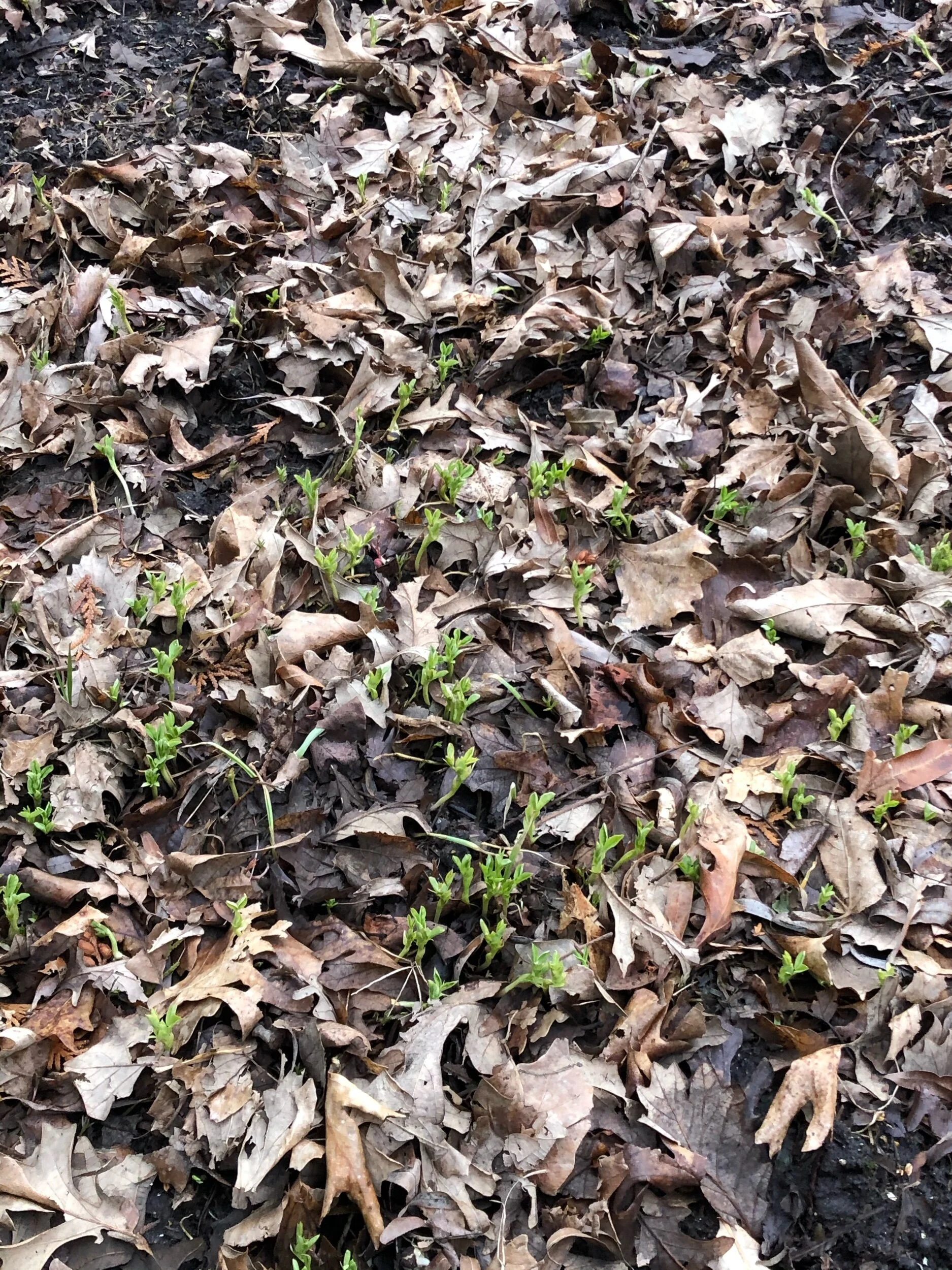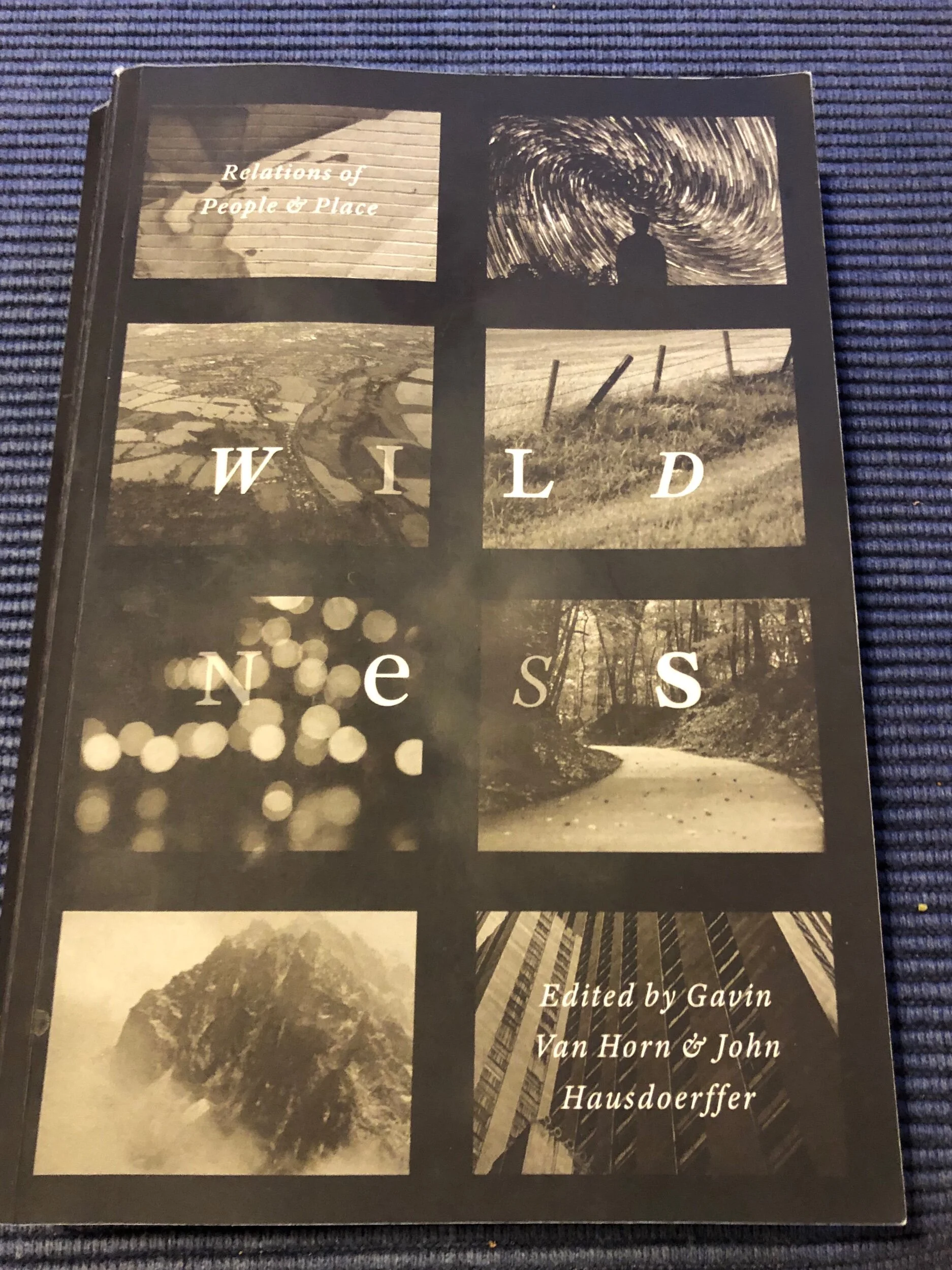Green Manure
The green manure cover crop planted last fall, and just recently freed of its burden of snow, is springing into action.
And below some notes on the book Wildness.
Wildness
Note and Quotes
The book is a series of essays addressing the ideas of wildness and wilderness. Much like the book Wilding, Wildness sees humans as part of the wild, and wilderness as capable of existing almost anywhere.
Gavin Van Horn, “Into The Wildness”
Whether its is a place, a nonhuman animal or plant, or a state of mind, wild indicates autonomy and agency, a will be be, a unique expression of life.
Curt Meine, “The Edge of Anomaly”
If the Driftless Area is not “pristine, nor thoroughly humanized, neither is it like the rest of the agro-industrial American Midwest. It is not wholly engineered to serve as a mere medium for corn and soybeans bound for the global market. It has not been made efficient to the point of diminishing returns. The goat prairies, woodlands, bottomland forests, riparian wetlands, rivers, streams, and springs keep the landscape diversified. Smaller-scale diary and livestock operations, with actual grazing animals, remain relatively viable so that a large portion of the land is covered in permanent pasture. The corrugated topography does not lend itself to ever-expanding economies of scale. Even the big-box stores have hard time squeezing into the narrow valleys.
Robin Wall Kimmerer, “Listening To The Forest”
Jeff Grignon explained that the idea of wild, untamed land did not exist in their (Menominee Nation, of Wisconsin) world but came along with the surge of newcomers, who pressed up against the Menominee homelands, misunderstanding their nature. The Algonquin languages, to which Menominee belongs, contain the pronoun Pekuac, meaning “growing on its own,” which indicates the freedom of that being to live where it will rather than the site of its landscape. He says that for him , “When you can feel the aliveness of everything around using all the senses, you are experiencing wilderness.”
Laura Alice Watt, “Losing Wildness For The Sake Of Wilderness”
Those who are fundamentalist about wilderness, demanding a purist definition of these landscapes, are driving humans and nature farther apart; what we need is a return to a more pragmatic vision of wilderness, one that recognizes that not all human actions diminish wildness, so as to make room for the relative wild once more.
Margot Higgins, “Inhabiting the Alaskan Wild”
“I like getting up and looking at what I get to look at every morning.”
—a comment by an elderly, long-time resident of the land that became the
Wrangell-St. Elias National Park.
Gavin Van Horn, “Healing the Urban Wild”
Quoting Gary Snyder:
“When an ecosystem is full functioning, al the members are present at the assembly. To speak of wilderness is to speak of wholeness. Human beings came our of that wholeness, and to consider the possibility of reactivating membership in the Assembly of Alll Beings is in no way regressive.”
And, speaking of Greencorps in Chicago:
Ecological restoration in the city is one attempt to ensure that all members of the assembly are present.
Seth Magle, “Building the Civilized Wild”
Also speaking of Chicago:
And slowly we can make cities into places where we can conserve rare species, too. This is called reconciliation ecology, and it opens up possibilities for cities that are a far cry from lifeless wastelands.
John Hausdoerffer, “The Akiing Ethic”
Akiing, then, is both land to which the people belong and land that requires the people.
The future of wildness lies in the discovery of the self-willed human and nonhuman communities that make up my “rice” and in the akiing, the land to which my people (whoever they might be)belong. I must, somehow, cultivate the Akiing Ethic.

